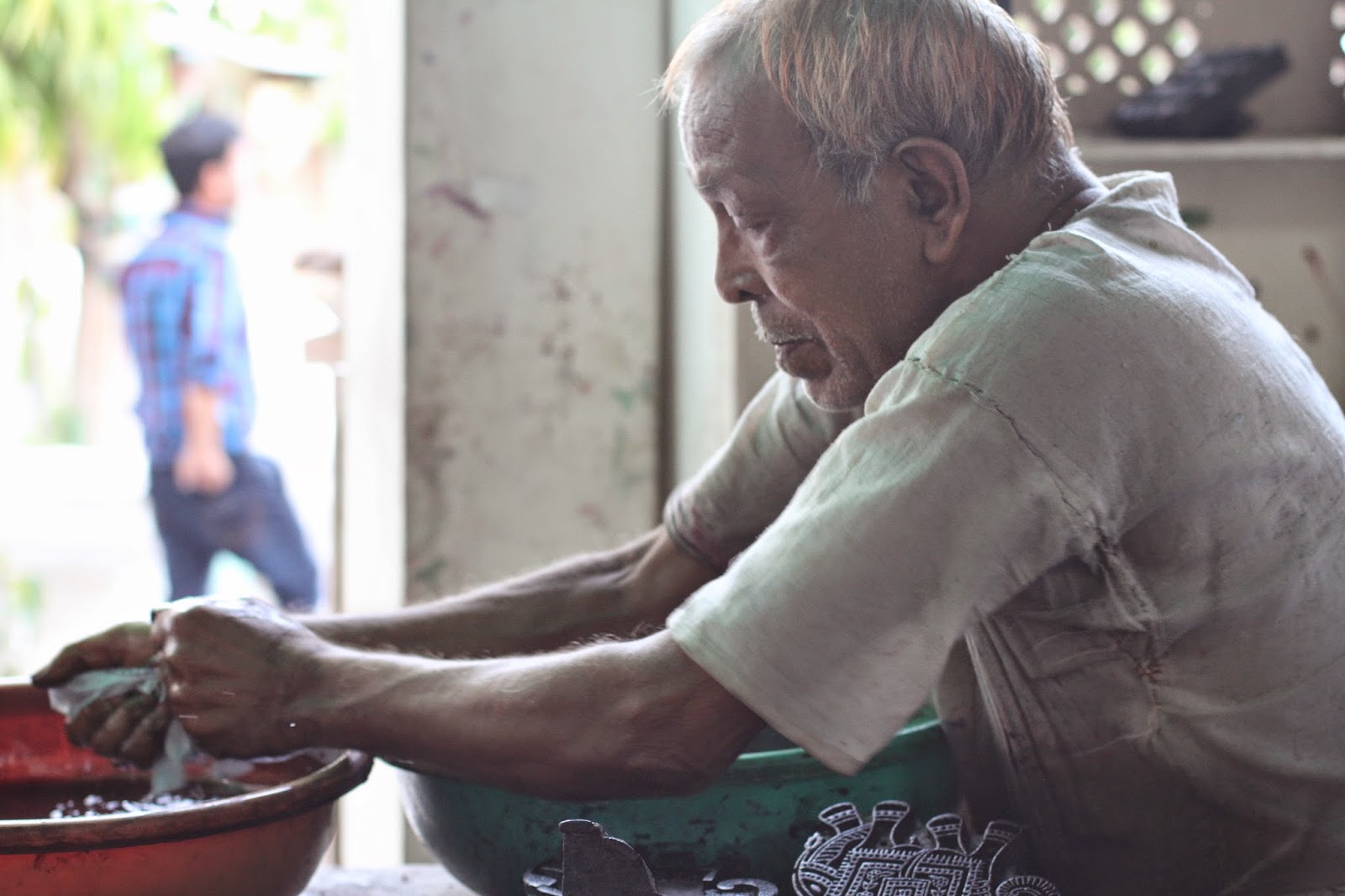This first print, Ovenbirds, was accepted into two shows in Pennsylvania this year - First Impressions, opening this Friday at Artists Image Resource, and at the 2015 Art of the State exhibition at the State Museum of Pennsylvania in Harrisburg.
This print is an engraving, which means I carved lines into a copper plate using small chisel-like tools, instead of using acid (like in an etching) or another mechanical method (like in a drypoint or mezzotint). The clean, v-shaped gouge an engraving burin leaves in the copper gives me a wonderfully crisp and sharp line.
The text was added to the print using a method called chine collée, where I cut out small pieces of paper and ran them through the press with my larger tan paper, with glue on one side to make them stick. These shapes were clipped from an old zoology textbook. I've also been experimenting with a botany textbook, Audubon bird guide, and plain white paper. Lining up the little paper pieces on the copper plate so that they stick on exactly the right spot takes a steady hand - and no sneezing!
My other project of this spring has been my very first reductive woodcut. I haven't done many woodcuts before this one, and certainly none with more than one color, so it's been a challenge for me. Reductive woodcut is a process where a printmaker uses one block to create an image with many layers of printing by carving away more and more of the block with each layer printed. (Photos and a great explanation can be seen here at this website by artist Lisa Studier.) Because of this process, each subsequent layer occupies a smaller and smaller part of the print - so you have to plan ahead if you want colors in lots of places! My image of a gyrfalcon is fairly simple:
The print on the left shows the first layer, printed in semi-transparent white ink on brown handmade paper. After printing ALL of the prints I wanted to make in this edition, I carved away at the block and printed the next layer in light blue, which you can see in the print on the right. Here's a closer shot:
Printing more than one layer requires setting your print down in the exact same spot on your woodblock each time, so there are systems using jigs and hole punches that printmakers typically use to keep registration exact. Mine aren't all coming out perfectly, but I've enjoyed experimenting with the color relationships I can get with more than one layer on colored paper. I'll be adding a third layer soon!






















































